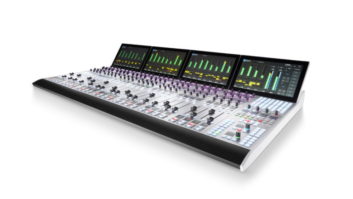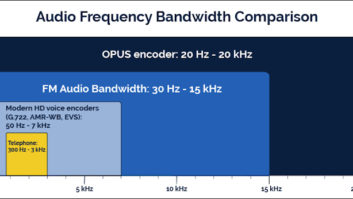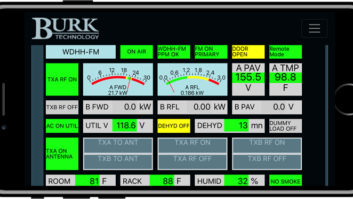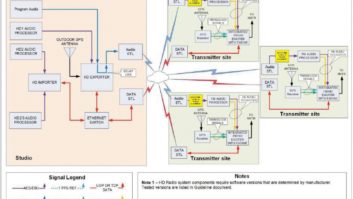Setting up a LAN
Apr 1, 2001 12:00 PM, By Kevin McNamara, CNE
Local Area Networks (LAN) allow users to share data and resources, such as printers and Internet connections. It’s hard to find a business without a LAN and, in fact, the number of households today with two or more PCs is around 20%. Many multiple-PC households are connected to a LAN. The proliferation of LANs is due to the availability of inexpensive, higher performance hardware and improved network-friendly operating systems. Setting up a LAN may seem fundamental to most of us, but given the rate that technology changes these days, a little review is in order.
Network operating systems
The battle of the PC-based Network Operating System (NOS) is quietly coming to an end. Novell, which once boasted over 80% of the market, is virtually gone. Microsoft is the current ruler. The evolution from DOS to the current versions of Windows has been frustrating for most users. However, Microsoft recognized that the operating systems for both standalone PCs and network servers would need to fully support the TCP/IP protocol that is used exclusively for all communications on the Internet. Novell, on the other hand, built its NOS around IPX. This lack of native TCP/IP support caused its market share to dwindle.
Protocols define and implement the means for data communications devices to communicate with one another. It once was fairly difficult to mix different types of computers, such as Macintosh and Windows, in part due to different protocols being used. This was solved by creating network-client programs that were loaded on the PC during the boot process. These client programs permitted data files to be shared between machines.
Protocol types
Novell used the IPX protocol, which stands for Internetwork Packet Exchange. IPX is a connectionless protocol, which means that acknowledgement is not required for any sent packet. The data reliability is handled at a higher layer. The networking hardware determines how devices will be addressed.
IPX is considered to be a routable protocol, allowing for data packets to be sent through certain devices and to arrive properly at the intended destination. Packets of data are broken into smaller packets called datagrams, which set a predetermined size and contain information that will deliver the packets to the desired destination.
Microsoft developed another popular protocol called NetBEUI or Network BIOS Extended User Interface. NetBEUI was designed to extend the Basic Input/Output System (BIOS) of the PC operating system to support basic networking functions. The NetBEUI protocol is not routable; however, it works very well in small peer-to-peer networks. If you are looking to quickly assemble a small Windows-based network, or just need to move large files from one machine to another, setting up a network connection is easy:
- Connect two machines to a hub using standard Ethernet cabling or directly to each other using a cross-over Ethernet cable.
- Add NetBEUI under protocols in the network setup box in Windows.
- Enable Share files and printers in the network setup.
- Enable Sharing for the drive (or directory) that you want to make available to the other machine. This is done by right clicking the proper directory in Windows Explorer, selecting share and selecting share this folder.
This assumes that each machine has a properly configured network interface card (NIC) installed. You should be able to see the drives and directories that you permitted to be shared by clicking on Network Neighborhood. Once you find the directories you need, select Map Network Drive. You will be given a choice of drive letters that can be assigned to the remote drive (typically the next letter); click OK, and that drive should be listed along with your local drives in Windows Explorer.
The TCP/IP protocol is the basis for all communications over the Internet and for most LANs. TCP/IP has been around for several decades and was originally developed to facilitate reliable data communications between different computer platforms connected to a variety of transport systems, i.e. dial-up, T1.
The TCP/IP protocol is actually the combination of two protocols � Transport Control Protocol (TCP) and Internet Protocol (IP). The Internet Protocol defines a data delivery system wherein the sending and receiving machines are not necessarily directly connected. IP is responsible for breaking the data into datagrams and inserting the proper addressing information. The Transmission Control Protocol works with IP to provide reliable delivery. It provides a means to ensure that the various datagrams making up a message are reassembled in the correct order at their final destination and that any missing datagrams are re-sent until they are correctly received.
LAN Types
PC-based networks fall into two categories � peer-to-peer or client-server LANs. Peer-to-peer LANs are the easiest (and least expensive) to implement. All Windows versions since Windows95 provide the tools to connect to other Windows-based PCs using various protocols. Peer-to-peer networks are intended for small workgroups, typically around 10 users.
Client-server LANS account for the majority of corporate networks. The servers provide a means of centralized management, security and resource sharing. Larger LANs can consist of multiple servers distributed across physical locations, even different countries. The servers can also provide specialized functions, such as database, e-mail or fax distribution.
Another variation of the client-server network is the thin client-server. One of the defining characteristics of this type of network is that the primary processing work is always done on the server, while the client work-station is not much more than a dumb terminal. Typically, these terminals are more advanced than what was available in the past and support a variety of graphics and HTML.
Hubs, switches and routers
Virtually all LANs use Ethernet as a means to transport data. Ethernet uses a star topology, where devices are attached to a central Hub. Hubs are available to support the 10, 100 and 1000Mb/s Ethernet standard.
A switch is an enhanced hub. In a hub all the Ethernet signals collide. A switch creates a virtual path between two devices, eliminating the potential data collision.
Routers can determine where to route data, based on address information contained within the packet. Fundamentally, routers are used to connect two or more networks together. Probably the most common use for routers is to connect a LAN to the Internet.
Kevin McNamara, BE Radio’s consultant on computer technology, is president of Applied Wireless Inc., New Market, MD.
All of the Networks articles have been approved by the SBE Certification Committee as suitable study material that may assist your preparation for the SBE Certified Broadcast Networking Technologist exam. Contact the SBE at (317) 253-1640 or go to www.sbe.org for more information on SBE Certification.












